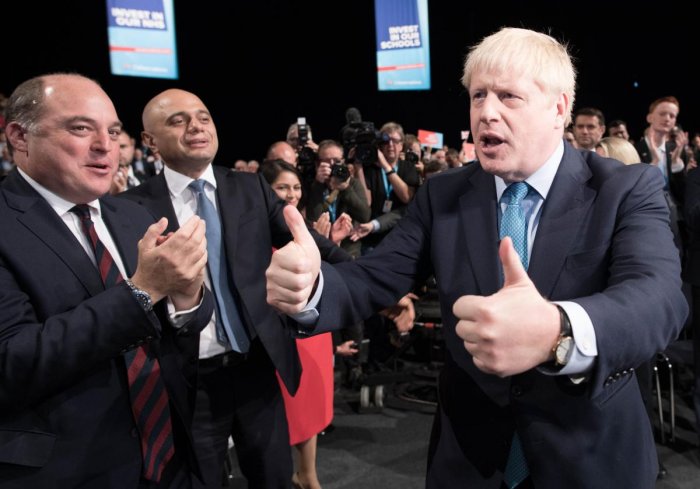LONDON: British Prime Minister Boris Johnson met his senior ministers Thursday before setting out on a delicate mission to convince sceptical EU leaders to back his new Brexit plan.
Johnson is racing against time and facing headwinds across European capitals as he tries to rally support for a new approach to settling the three-and-a-half-year crisis.
His failure to get both the EU and his own fractured parliament to back his way forward will result in either a crash exit for Britain or a third Brexit delay this year.
If he succeeds, Johnson could embark on an even longer and more complex stage of the process, working to negotiate a new trade agreement with the EU.
UK Brexit Secretary Steve Barclay said all sides had to start real talks on Johnson’s outline by the weekend to have any chance to get a deal in time for an October 17-18 EU leaders’ summit in Brussels.
“We need to move forward at pace, intensively,” he told BBC radio.
“The response from the (EU) Commission is that they recognise that this was a serious proposal and I think all sides want to see a deal.
“All sides recognise that the alternative to no-deal is disruptive.” Johnson was due to set out his vision in parliament on Thursday morning after meeting cabinet ministers in Downing Street.
Johnson’s complicated proposals for preserving a free-flowing border across the island of Ireland after Brexit were met with a guarded reception in Brussels and Dublin.
“There is progress, but to be frank a lot of work still needs to be done,” EU’s lead Brexit negotiator Michel Barnier said.
European Commission chief Jean-Claude Juncker used a call with Johnson to share concerns about what he said were “problematic points”.
In Dublin, Prime Minister Leo Varadkar said the documents “do not fully meet the agreed objectives” for keeping Ireland’s border with British province Northern Ireland invisible.
But Johnson appeared to have won vital backing from some members of the UK parliament who had repeatedly rejected the deal former prime minister Theresa May struck with the EU in 2017.
These included more moderate members of the main opposition Labour Party and some of the most ardent eurosceptics among Johnson’s own Conservatives.
“It’s got a very good chance of getting through,” Johnson’s no-deal Brexit preparations point man Michael Gove told ITV television on Wednesday night.
“It seems to be a pretty solid majority, and it’s one that the EU can take reassurance from as well because one of the concerns that the EU had in the past (was that) look, if we make a concession session, will it get through parliament?” Johnson was expected to continue phoning European leaders and possibly setting off on a few trips in the coming days to keep his proposals alive.
His strategy tackles the Irish border issue by taking Northern Ireland out of the EU customs union but keeping it aligned with Ireland’s rules and regulations for goods.
This would effectively create two temporary economic borders — including one in the Irish Sea between mainland Britain and Northern Ireland.
One of the most contentious points of the deal gives a new Northern Irish assembly the right to end its alignment with Ireland by 2025.
A time-limited border solution has been a deal-breaker for Brussels in the past.
EU leaders are keen to preserve the economic bloc’s territorial integrity and fear counterfeit goods and other contraband flowing in unchecked.
But Johnson needed to insert the provision to secure the backing of his allies from Northern Ireland’s small but influential Democratic Unionist Party.
DUP leader Arlene Foster on Wednesday called Johnson’s proposals a basis for future talks. AFP







